Fiche système d'assainissement 2023
PINS JUSTARET
Réseau de type Séparatif
| Code de la STEP : | 0531421V001 |
|---|---|
| Nom du maître d'ouvrage de la STEP : | SIVOM SAUDRUNE ARIEGE GARONNE |
| Nom de l'exploitant de la STEP : | - |
| Date de mise en service : | 01 décembre 1977 |
| Date de mise hors service : | 31 décembre 2012 |
| Niveau de traitement : | Secondaire bio (Ntk) |
| Capacité : | 4 500 éq-hab. |
Raccordements communaux 10%..100% 10%..100% |

|

STEP
| Charge nominale DBO5 : | 270 Kg/j |
|---|---|
| Charge nominale DCO : | 540 Kg/j |
| Charge nominale MES : | 315 Kg/j |
| Débit nominal temps sec : | 1 125 m3/j |
| Débit nominal temps pluie : | - |
| Filières EAU : |
File 1 : Prétraitements, Boues activées faible charge, aération p |
| Filières BOUE : |
File 1 : Table d'égouttage |
| Filières ODEUR : | - |
Point de rejet
| Coordonnées (Lambert 93) : | 570 928, 6 266 388 , Coordonnées établies (précision du décamètre) |
|---|---|
| Milieu récepteur : | Rivière : L'Ariège Masse d'eau : L'Ariège du confluent de l'Hers vif au confluent de la Garonne |
Chronologie des raccordements au réseau
 Déployer
Déployer
Observations SDDE 2023
| Système de collecte : Pas d'observation | |
| Station d'épuration : Pas d'observation | |
| Sous produits : Pas d'observation |
Données chiffrées
Attention, cette STEP a été mise hors service le 31 décembre 2012Les données présentées ci-dessous peuvent provenir des différentes STEP suivantes, liées au même système de collecte : 0531421V002 - PINS JUSTARET N°2
Tableau de synthèse
Année d'activité 2023 - Possibilité de déversement par temps de pluie
| Paramètres | Pollution entrante | Rendement | Pollution sortante | |||
|---|---|---|---|---|---|---|
| Charge | % Capacité | Concentration | Charge | Concentration | ||
| VOL | 1 320 m3/j | 62 % | 1 298 m3/j | |||
| DBO5 | 311 Kg/j | 51 % | 239 mg/l | 99 % | 4,0 Kg/j | 3,1 mg/l |
| DCO | 773 Kg/j | 50 % | 599 mg/l | 96 % | 31 Kg/j | 24 mg/l |
| MES | 354 Kg/j | 278 mg/l | 98 % | 7,2 Kg/j | 5,4 mg/l | |
| NGL | 82 Kg/j | 63 mg/l | 80 % | 16 Kg/j | 13 mg/l | |
| NTK | 81 Kg/j | 62 mg/l | 81 % | 15 Kg/j | 12 mg/l | |
| PT | 8,7 Kg/j | 6,6 mg/l | 65 % | 3,0 Kg/j | 2,1 mg/l | |
Indice de confiance
| 2014 | 2015 | 2016 | 2017 | 2018 | 2019 | 2020 | 2021 | 2022 | 2023 | ||
| 3/5 | 4/5 | 2/5 | 4/5 | 4/5 | 4/5 | 4/5 | 4/5 | 4/5 | 4/5 |
Pollution traitée
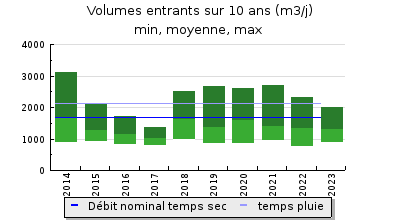
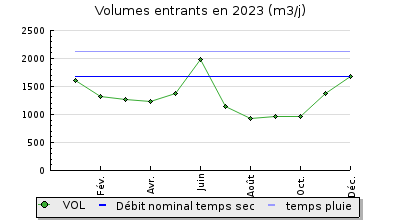
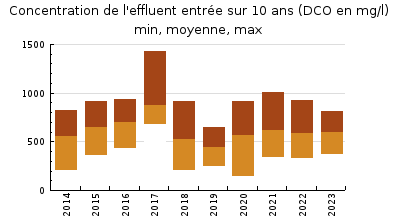
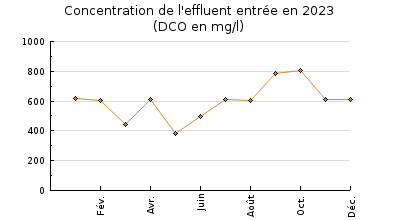
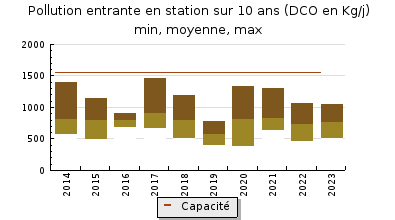
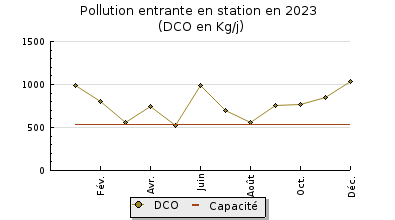
Pollution éliminée
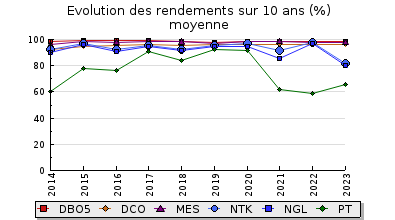
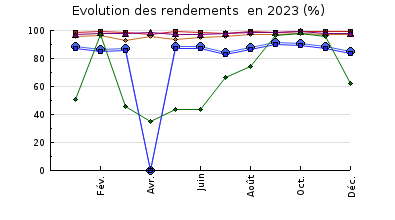
Pollution rejetée
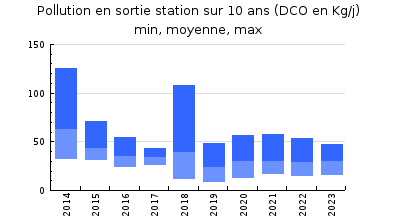
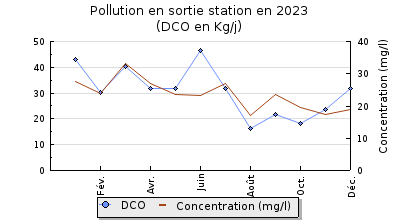
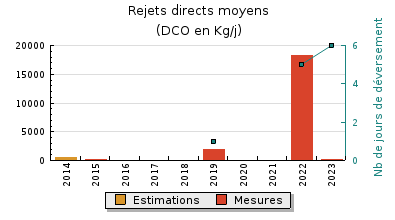
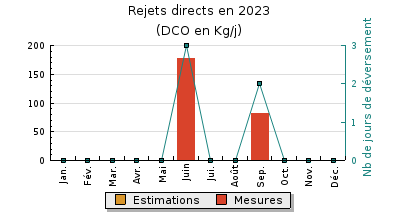
Production et destination des boues

Problèmes rencontrés en 2023
Aucun problème n'a été recensé en 2023
Accès aux données
Pour le système d'assainissement "PINS JUSTARET" :
Pour l'ensemble des systèmes d'assainissement du bassin, les données historiques sont disponibles en téléchargement depuis la thématique "Usages et pressions polluantes domestiques et urbaines" ou sous forme d'archive depuis le catalogue de données.
Autre source d'informations : la fiche du Portail d'information sur l'assainissement collectif

 Contact
Contact





 |
|